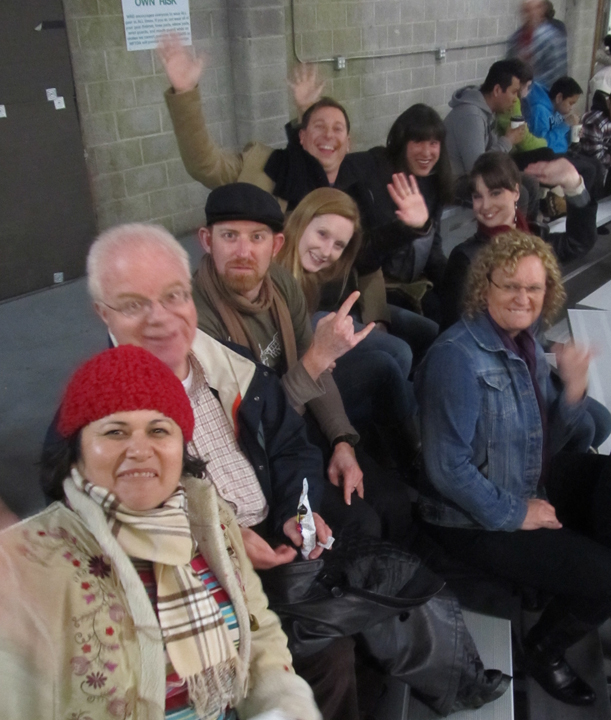By Margaret Kadoyama
Last Fall, I was contacted by Steve Comba, Co-Chair of the 2013 WMA Annual Meeting Program Committee, and he invited me to serve as a Program Committee member for the 2013 conference in Salt Lake City. I was honored to be asked, and I agreed to serve. Here are my reasons why, and here’s how they are playing out in the October conference:
- WMA is made of up a great group of colleagues! Conference attendees, session proposers and panelists, members of the Host and Program Committees, WMA staff, Board members, and volunteers make this a welcoming and inclusive group. It is always a pleasure connecting with WMA folks!
- Working with other Program Committee members provides the best way to get to know new colleagues. Working together with others is a very effective way to connect and get to know them more deeply. Getting to work with esteemed colleagues in this way leads to lifelong friendships – I know because many of my treasured friendships with museum colleagues started this way. Yes, I know we are all busy; saying “yes” to an opportunity to add committee work to an already very full workload may not have been my initial thought, but I am so glad I did! I now have created (and in some cases deepened) my relationships with the other 19 Committee members. I have also had the great pleasure of working with several of my former students, and it is particularly gratifying to work with them as peers; Jason B. Jones, Carrie Snow, Louise Yokoi, and James Leventhal, I’m talking about you!
- Serving on the WMA Program Committee is an effective way to have a hand in guiding the field and shining the light on good practice. When session proposals are submitted to WMA, Program Committee members shepherd them through the process of review and assist proposers in refining them to create the best program possible.
- Serving on the Committee is an excellent way to learn about the key issues in diverse museum disciplines. What is a burning issue for museum registrars in 2013? My registrar colleagues on the Committee can tell me, help me understand how these issues affect all of us, and how we need to address them, whether we are exhibition developers, executive directors, or visitor service managers.
Here’s how this is all playing out in the October conference:
When I arrive in Salt Lake City for the conference, I will be especially pleased to see and connect with other Program Committee members. After all, we’ve already spent five intensive days together working, playing, and crafting this conference, and part of each of us is reflected in the whole program.
On our last day together in February, each Program Committee member put on the hat of a specific role, and imagined him- or herself as a conference attendee with that specific type of job. As we thoughtfully placed each session on a particular day and in a particular timeslot, we stepped back, put on our specialized hats, and considered how that session would flow with the sessions before and after it. We looked for great connections –placing sessions back-to-back to create a nice segue from one to another, especially when they addressed related concerns. This helped us see connections that we would not have otherwise seen, and the conference is stronger because of that.
I had the opportunity to shepherd several proposals through the vetting process, so I had fascinating conversations with proposers to learn why they proposed their session and what they wanted session attendees to take away. It was so interesting to talk at a deeper level about all kinds of topics, from an innovative staff development program to collaborative exhibitions to developing a personal plan for change. These conversations were crucial in helping us capture the essence of the proposals. Now I’m invested in *their* success, and I look forward to meeting the proposers and panelists at the conference.
Learning about key issues in diverse museum disciplines means that I will be able to see how contemporary concerns are playing out in diverse ways, and I will be able to understand these more fully. It may well mean that I go to a session or participate in a conversation that provides that spark of new perspective to inform my work. I’ve already noted a few session topics that I want to look at more closely – ones that were not on my radar before!
And last, it will be a time for having fun with new and old friends. When we met in Salt Lake City in early January, Steve Comba, who lives in Southern California, was delighted to go crunching through clumps of snow on our short walks each day. When else would I be able to chuckle with a new friend about the pleasures of snow when it is a chilly 9° out? October will be gorgeous in Salt Lake City, but Steve will have to make do without the snow.
I eagerly look forward to seeing you in Salt Lake City!
To register for WMA 2013, please click here.
To view the Preliminary Program for WMA 2013, please click here.
Margaret Kadoyama, principal of Margaret Kadoyama Consulting, specializes in museum-community involvement and program development. She is on the faculty at John F. Kennedy University Museum Studies and teaches Museums and Communities.










Add new comment